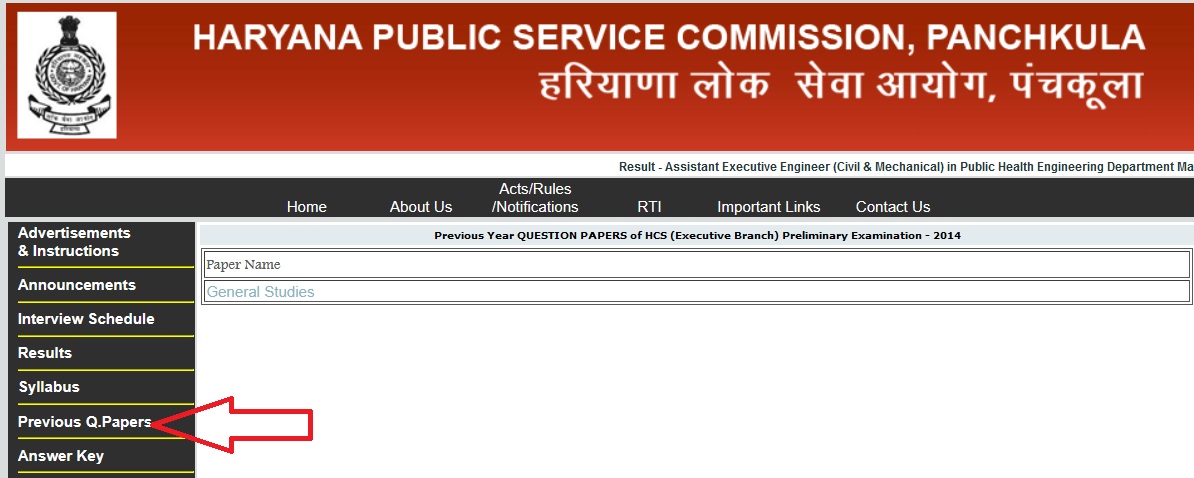HCS Main Exam Agriculture Question Paper : hpsc.gov.in
Name of the Organization : Haryana Public Service Commission
Name of the Exam : HCS (Ex.Br.) Main Exam
Subject : Agriculture
Document Type : Previous Question Paper
Year : 2014
Website : http://hpsc.gov.in/en-us/
Download Sample/Model Question Paper : https://www.pdfquestion.in/uploads/11091-Agriculture.pdf
HCS Main Exam Agriculture Question Paper
Agriculture :
Code : 01
Time : 3 Hours
M.M. : 150
Related : HPSC HCS Main Exam General Studies Question Paper : www.pdfquestion.in/11087.html
Note :
i)Attempt five questions. All questions carry equal marks. Question number I is compulsory. Answer any two questions from Part I and two questions from Part II. The parts of the same questions must be answered together and must not be interposed between answers to other questions.
ii) In case of any discrepancy in the English and Hindi versions, English version will be taken as final.
1. Write critical notes on any five of the following :
a. Integrated nutrient management (lNM)
b. Precision agriculture
c. Soil colloids
d. Multistoried cropping
e. Social marketing
f. Biofertilizers
g. Types of drainage

PART – I :
2.a) Describe the key principals of organic farming. Discuss its scope and importance in our country
b) Define the term “Sustainable agriculture”. Briefly discuss the different ways to achieve sustainability in Indian agriculture.
c) Explain in detail about green manuring. Why it is not gaining popularity in our country?
3. a) What is dry land agriculture? Discuss in detail water use efficiency in relation to crop production.
b) What are essential plant nutrients and their functions. Describe in detail deficiency symptom of plant nutrition.
c) What are weeds? Describe their characteristics. What are the recommended practises to control weeds?
4. a) Write the principle of soil fertility. How P & K get fixed in soil. What is the scope for their efficient use.
b) What is the philosophy, objectives, scope and principles of extension in agriculture? What is the importance of front lines demonstrations?
c) What are the principals of economics as applied in agriculture? What is farm management planning and budgeting?
Part – II :
5 a) Name the Laws of Heredity. What is their significance in plant breeding?
b) What is hybrid vigour ? Discuss in detail different aspects of seed production and certification.
c) Differentiate between pure-line selection and mass selection. What is mutation and its importance in plant breeding.
6. a) Of what physiological importance is photosynthesis? What are the modern concepts and factors affecting photosynthesis.
b) Differentiate between C3, C4 and CAM mechanisms in plants citing examples.
c) Write in detail the problems of post harvest handling and marketing of the fruits and vegetable industries.
HCS Preliminary Exam Law Question Paper :
1 Experiments with sea urchin demonstrated species specific sperm-egg recognition through the protein
(A) Bindin
(B) Avidin
(C) Activin
(D) HYalin
2 The primary function of the diaphragm is to
(A) Control blood pressure
(B) Regulate respiration
(C) Support the heart
(D) Keep the rib cage dilated
3 In mammals, the main integrating centre for control of temperature is
(A) Anterior pituitary
(B) Adrenal cortex
(C) Posterior pituitary
(D) Hypothalamus
4 During inspiration, the air that we breathe moves through different regions of the associated organs in the sequence of
(A) larynx- nasopharynx- trachea-glottis
(B) nasopharynx – glottis – larynx-trachea
(C) glottis – nasopharynx- Iarynx- trachea
(D) larynx- glottis – nasopharynx – trachea
5 Which of the following bird species is endangered?
(A) Hill myna
(B) Great Indian Bustard
(C) Crow pheasant
(D) Grey Hornbill
6 When removal of a species from an ecosystem affects persistence of many other species and the impact of that species removal is disproportionate to its abundance, the species is known as
(A) Indicator species
(B) Keystone species
(C) Flagship species
(D) Umbrella species
7 Which of the following methods is the most appropriate for estimating the population density of burrowing animals?
(A) Quadrant sampling
(B) Line transect sampling
(C) Tag-recapture method
(D) Nearest neighbour distance method
8 Fat formation from glucose takes place in order to
(A) Relieve liver from excess of glycogen
(B) Remove excess of fatty acids from circulation
(C) Keep blood sugar level constant
(D) Allof these
9 End product of protein catabolism is
(A) Urea
(B) Uric Acid
(C) Glutamine
(D) Ammonia
l0 The post ovulatory regression of the corpus luteum is caused by
(A) a decrease in LH secretion
(B) a decrease in FSH secretion
(C) reduction in the steroidogenic activity of the corpus luteum
(D) an increase in HCG secretion